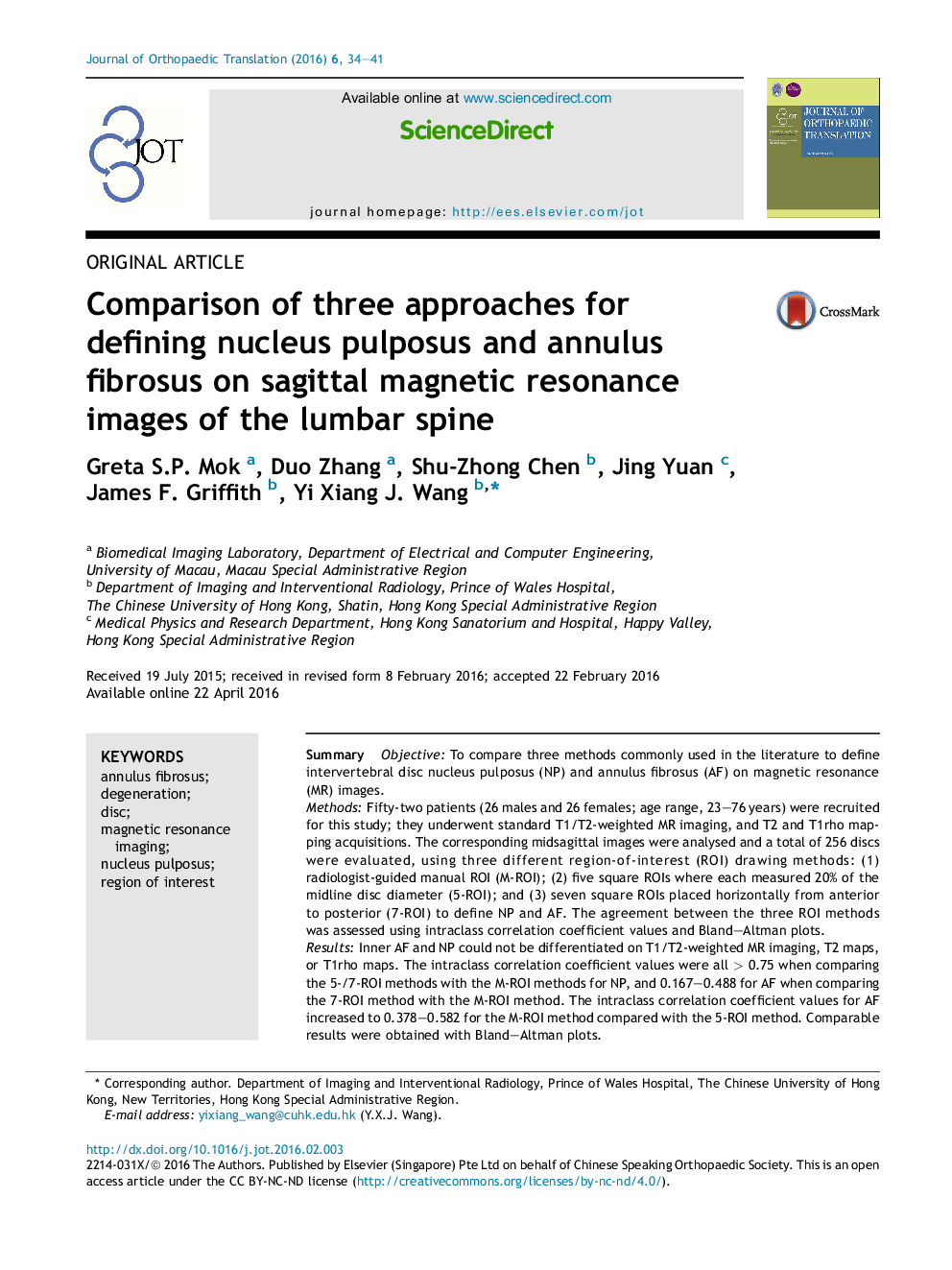| Article ID | Journal | Published Year | Pages | File Type |
|---|---|---|---|---|
| 2739772 | Journal of Orthopaedic Translation | 2016 | 8 Pages |
SummaryObjectiveTo compare three methods commonly used in the literature to define intervertebral disc nucleus pulposus (NP) and annulus fibrosus (AF) on magnetic resonance (MR) images.MethodsFifty-two patients (26 males and 26 females; age range, 23–76 years) were recruited for this study; they underwent standard T1/T2-weighted MR imaging, and T2 and T1rho mapping acquisitions. The corresponding midsagittal images were analysed and a total of 256 discs were evaluated, using three different region-of-interest (ROI) drawing methods: (1) radiologist-guided manual ROI (M-ROI); (2) five square ROIs where each measured 20% of the midline disc diameter (5-ROI); and (3) seven square ROIs placed horizontally from anterior to posterior (7-ROI) to define NP and AF. The agreement between the three ROI methods was assessed using intraclass correlation coefficient values and Bland–Altman plots.ResultsInner AF and NP could not be differentiated on T1/T2-weighted MR imaging, T2 maps, or T1rho maps. The intraclass correlation coefficient values were all > 0.75 when comparing the 5-/7-ROI methods with the M-ROI methods for NP, and 0.167–0.488 for AF when comparing the 7-ROI method with the M-ROI method. The intraclass correlation coefficient values for AF increased to 0.378–0.582 for the M-ROI method compared with the 5-ROI method. Comparable results were obtained with Bland–Altman plots.ConclusionThe 5-/7-ROI methods agreed with the M-ROI approach for NP selection, while the agreement with AF was moderate to poor, with the 5-ROI method showing slight advantage over the 7-ROI method. Cautions should be taken to interpret the MR relaxometry findings when 5-/7-ROI methods are used to select AF.
